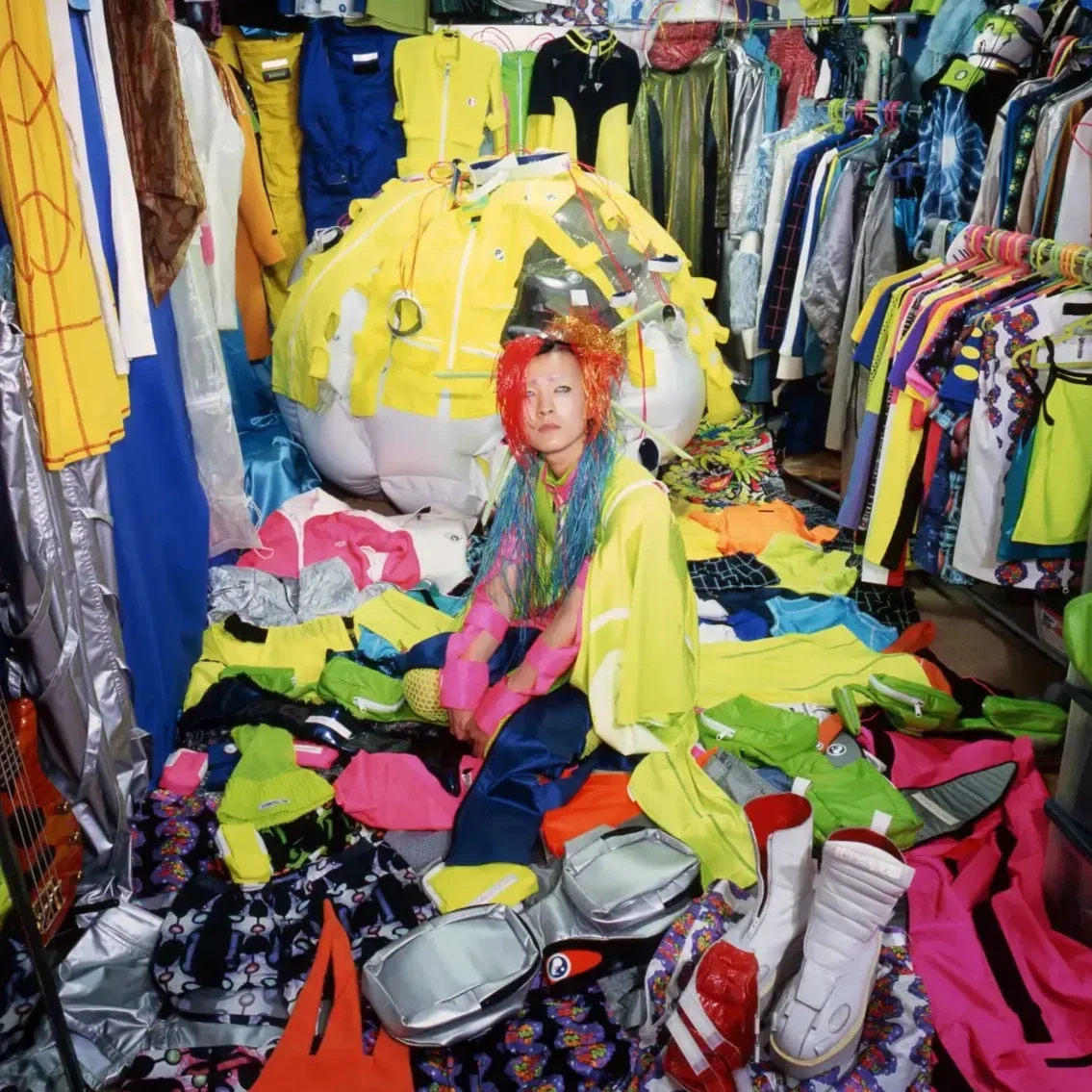How Momofuku Ando Ignited The Instant Ramen Revolution
Momofuku Ando│© Cupnoodles Museum Yokohama
Imagine this: you're racing against deadlines, your wallet is nearly empty and you are starving. What is your go-to lifesaver meal? For many, it's Cup Noodles – the quick, tasty, budget-friendly option that has saved many of us more than once. But this modern convenience was born in a far more desperate time.
In post-war Japan, with food shortages everywhere and people standing in line for hours just to get a single bowl of ramen, one man had a revolutionary idea. Momofuku Ando wanted to create something affordable, fast to make but filling and accessible to all.
And so the idea of the iconic instant noodle was born – a simple meal that for decades has come to the rescue in times of hunger and need. But how did he invent the genius idea of making a meal in less than two minutes by simply adding hot water?
Momofuku Ando – From Failure to Revolutionary Success
Born in Taiwan in 1910, Momofuku Ando was raised by his grandparents during a period when the island was under Japanese rule. At the age of 22 he started his own clothing business selling knitted goods. Emboldened by his success he moved to Osaka in Japan and founded a trading company.
Near the end of world war ll, Momofuku Ando lost everything. His company, warehouse and personal belongings were all destroyed in the American fire bombings of Osaka. Japan faced widespread hunger, unemployment, pervasive poverty, and a severe lack of opportunities.
Momofuku Ando│© Nissin Group
Seeing people standing in long lines just to get one bowl of Ramen, made him realize that the world is peaceful only when everyone has enough to eat, everything starts with food. Motivated by this insight, Ando decided to change course and entered the food industry. He wanted to produce salt and nutritional products but this industry proved to be too competitive and he fell short of success.
Refusing to give up, Momofuku Ando found inspiration from the scene he remembered in the streets of Osaka in the days after the war. Among the ruins there was a noodle stand and he thought how wonderful it would be if whole families could have noodles whenever and wherever they needed.
This idea inspired him to build a makeshift laboratory in his backyard, where he started to experiment. Not having any knowledge or experience of his own with noodle making, his idea was to create a noodle dish that would last long and be ready in minutes with just a little bit of hot water.
Day in and day out Ando locked himself up in the shed and worked on developing a method from scratch. There just seemed no way to dry the noodles out without breaking them. But seeing the huge potential in his idea, he didn't give up and founded his company Nissin Foods in 1948.
Momofuku Ando shed reproduction│© Nissin Group
The Secret of Instant Noodles
One day he stumbled upon a brilliant idea as he watched his wife Masako preparing fried tempura for dinner, using super hot oil. After observing how quickly the tempura turned crisp, Ando decided to try the same technique on his noodles and began experimenting.
The hot oil completely removed the moisture, and that’s where the secret of instant noodles lies. When frying the noodle dough, the moisture is vaporized like in the tempura, forming tiny holes. When hot water is poured over, it penetrates the pores, rehydrating the dried dough and bringing back its tender texture. And that’s how Momofuku Ando invented the flash-frying method.
Chicken Ramen
He had accomplished his mission by inventing the magical instant noodles. Now, Ando needed the perfect seasoning. Believing that the Asian flavor of soy sauce wouldn’t resonate with Western customers, he opted for the universal appeal of chicken soup, since chicken is eaten in almost every culture.
After intense experimentation in his backyard shed, Momofuku Ando finally perfected his recipe in 1958. Just two minutes after adding hot water, the noodles were ready to eat. He named his creation Chicken Ramen and priced it at 35 cents.
Convinced of his new invention, Ando approached several wholesalers. However, they believed that 35 cents was too expensive, as it was six times the price of a typical serving of fresh noodles – about the same price as making them from scratch. Consequently, his instant ramen was viewed as a luxury item and failed to meet the needs of struggling working-class people.
Instant Chicken Ramen│© Nissin Group
Instant Ramen, Instant Success
Still his instant ramen was an instant success, due to its numerous benefits: It was simple and fast to make and it could be stored for far longer than fresh noodles. So Ando tried to drum up interest by organizing tasting events across the city. Consumers were convinced and bought the samples. Within a year Ando built his first factory and started producing 10,000 packs a day.
Today Nissin claims the product’s initial success was due to the growing number of two-income households in Japan. The country was in a period of rapid growth and with the emergence of an Suburban middle-class came Japan’s first ever American style supermarkets, offering a wide array of processed and prepackaged foods for Japanese people to enjoy for the first time ever.
So with the rise of convenience stores and vending machines, instant ramen only became more popular with time. And by the mid 1960s Nissin aimed to expand into other countries outside of Japan.
Invention of Cup Noodles
While touring the United States as a potential new market, Momofuku Ando noticed a recurring Trend at every corporate office he visited. He was surprised to find that Americans would break the noodle block in half, put it in a cup, pour boiling water in and eat directly out of it.
The idea of disposable packaging was foreign to Ando, but he knew he had to embrace America's fast-paced, convenience-driven, container-friendly culture if he was going to make it big in the States. And that’s how the so-called Cup O’ Noodles were born!
Cupnoodles production line│© Nissin Group
So when the inspired Momofuku Ando headed back to Japan, he had a team of the world's top noodle scientists generate almost 40 different prototypes for a new type of instant ramen, one that could be made straight from a disposable cup.
After running some tests, they eventually settled on a lightweight polystyrene version, one that would better insulate the heat of the noodles than any paper-based alternatives. By September of 1971 Cup Noodles were ready to change the way of eating ramen forever.
Many Brands, One Global Idea
After Cup O’ Noodles became such a hit all over the United States, Nissin Foods began to set up plants in Hong Kong, Singapore, Thailand, Brazil, Germany and the Netherlands. With that, Momofuku Ando created a global Empire before the end of 1970.
Over the many decades since Nissin’s instant ramen and Cup Noodles hit the market, they have released dozens of flavors and have inspired many competitors. And since then instant noodles have found their way into our everyday life; be it a late-night snack after a long workday or a quick meal in between classes. They have been a hit all around the world and likewise almost every country seems to have its own particular brand of instant ramen.
Koreans have Nong shim, Singaporeans have Prima taste, the Vietnamese have Vina Acecook and the Americans have their Japanese imported Maruchan, to name a few. But still Nissin remains the top brand of instant ramen in the world to this day. Today it is a worldwide hit in 100 countries and regions, running under the motto „Many brands, one global idea“.
The company focuses on shareholder-oriented management by expanding and improving its operations worldwide while striving for sustainable growth. Working together as one team, they have defined a new mission that focuses on building a business that concentrates on convenience, great taste, Asian-inspired flavor, and value.
Instant ramen production│© LotsaSmiles Photography
Cup Noodles - A Surprising Flop in Japan
Believe it or not, Cup Noodles were a hard sell in Japan at first. One portion of Cup Noodles cost four times as much as a package of instant ramen. Also standing while eating was seen as rude in Japan. So the new to-go ramen concept didn’t really resonate with Japanese customers.
Nissin quickly changed their approach. Instead of just selling Cup Noodles in supermarkets, they produced around 2,000 vending machines that dispensed hot water like a coffee machine. This way, customers could enjoy Cup Noodles right then and there, no matter where they were. They placed these machines in busy pedestrian areas and places popular with young people. When sales were strong, each of the 20,000 units could sell up to 20,000 cups of ramen in a single day.
Still Cup Noodles didn’t really take off in Japan until a defining moment in February 1972 during the Asama-Sanso incident. In this 10-day hostage standoff between police and five Marxist radicals at a remote mountain lodge, the police needed a quick, convenient meal. Cup Noodles became their go-to meal because it was an easy way to get some calories without having to leave the standoff.
As the whole country watched the situation unfold on television, they saw the officers enjoying Cup Noodles. This made the brand an instant household name in Japan. Today, over 100 billion servings of instant noodles are consumed each year around the world.
Space Ram – Cup Noodles Going Outer Space
When Momofuku Ando said that he wanted people to enjoy ramen whenever and wherever they needed, he was truly serious about it. He had a lifelong dream of making food accessible for everyone, everywhere – even in space. Space Ram was the culmination of that vision, as he believed that a simple, satisfying meal like noodles could bring comfort to people in all environments. Ando himself lived long enough to see Space Ram come to fruition, as it was launched in 2005, just two years before his passing in 2007.
In 2005 Nissin Foods created a special meal, only designed for the astronauts to enjoy a familiar and tasty meal on the Japanese space mission aboard the Space Shuttle Discovery (STS-114). This innovation was a tribute to the 35th anniversary of the invention of Cup Noodles by Ando.
However, eating in zero gravity brings unique challenges, such as floating food particles and no access to boiling water. Nissin had to solve these issues by redesigning the noodles and soup base to be consumed safely in space without creating a mess.
The noodles were made shorter so they could be eaten in small, easy bites. They also thickened the broth so it would stick to the noodles, preventing droplets from floating around the spacecraft. Since astronauts don’t have access to boiling water on the spacecraft, Nissin created a special noodle using gelatinous starch that can be rehydrated at just 70°C, which is below boiling point.
Not only did they change the noodle and soup broth, but also the packaging needed a special makeover. To ensure it remained fresh and lightweight, Space Ram was vacuum-sealed and packaged in single-serving pouches. To eat Space Ram, astronauts used a straw-like tube to suck up the broth and noodles inside the pouch, making it a practical solution for a zero-gravity environment.
Space Ram came in a soy sauce flavor, reflecting the traditional tastes of Japanese Cup Noodles. This was chosen to give astronauts a comforting and familiar meal while being so far away from Earth. There were also other flavors, like miso, pork and curry, giving astronauts a nice variety of tastes from home.
The creation of Space Ram made instant noodles a part of space cuisine, which traditionally consisted of dehydrated or specially processed foods. It was a big step in making space meals more enjoyable and flavorful, proving that even comfort foods like ramen can be adapted for space travel. This marked Nissin’s role in contributing to advancements in food technology for space missions, combining innovation with a genuine desire to help astronauts feel more connected to home.
Space Ram showed that with creativity and science, it’s possible to adapt everyday foods for extreme environments. It set the foundation for finding ways to provide astronauts with familiar foods as space exploration advances. While Space Ram was designed specifically for astronauts, its development inspired Nissin Foods to keep experimenting with innovative products and pushing the limits of food technology.
The Cupnoodles Museum
The Cupnoodles museum in Yokohama documents the life of Momofuku Ando and the process of inventing his iconic instant noodles. They even built an exact replica of his backyard laboratory, where he invented the very first Chicken Ramen.
One of the museum’s most popular attractions is the Cup Noodle factory, where visitors can design their own custom Cup Noodles. They can choose their own cup design, select the soup base (like soy sauce, curry, or seafood), and pick four toppings from a wide variety of options, including classic ingredients like shrimp, corn, and green onions, and quirky ones like cheese or egg. The noodles are sealed and packaged immediately, so the visitors can take home a completely personalized, one-of-a-kind instant noodle cup.
A historical timeline of over 3.000 different instant noodle packages that have been launched around the world since the invention, showcases how the product evolved over the decades. It's fascinating to see the different packaging and flavors developed for different markets.
Also with a registration, groups can take part in a workshop to make their own block of instant noodles from scratch. Starting with kneading, rolling, and steaming the wheat flour, visitors get to deep-fry the noodles just like Ando did when he invented the first instant noodle product.
However, the museum doesn’t just focus on noodles, but also on the inspiring life story of Momofuku Ando. His journey from failure to success and his relentless pursuit of innovation are highlighted in an exhibit that teaches visitors valuable lessons about perseverance and creativity.
If you have the chance, it’s definitely worth a visit! The Cup Noodles Museum is not just a place for ramen fans but also an inspiring experience for those interested in food innovation, creativity, and Japanese culture. It's a fun, educational, and interactive experience for both kids and adults alike.













The humble Chinese noodle soup transformed into Japan’s beloved comfort food.